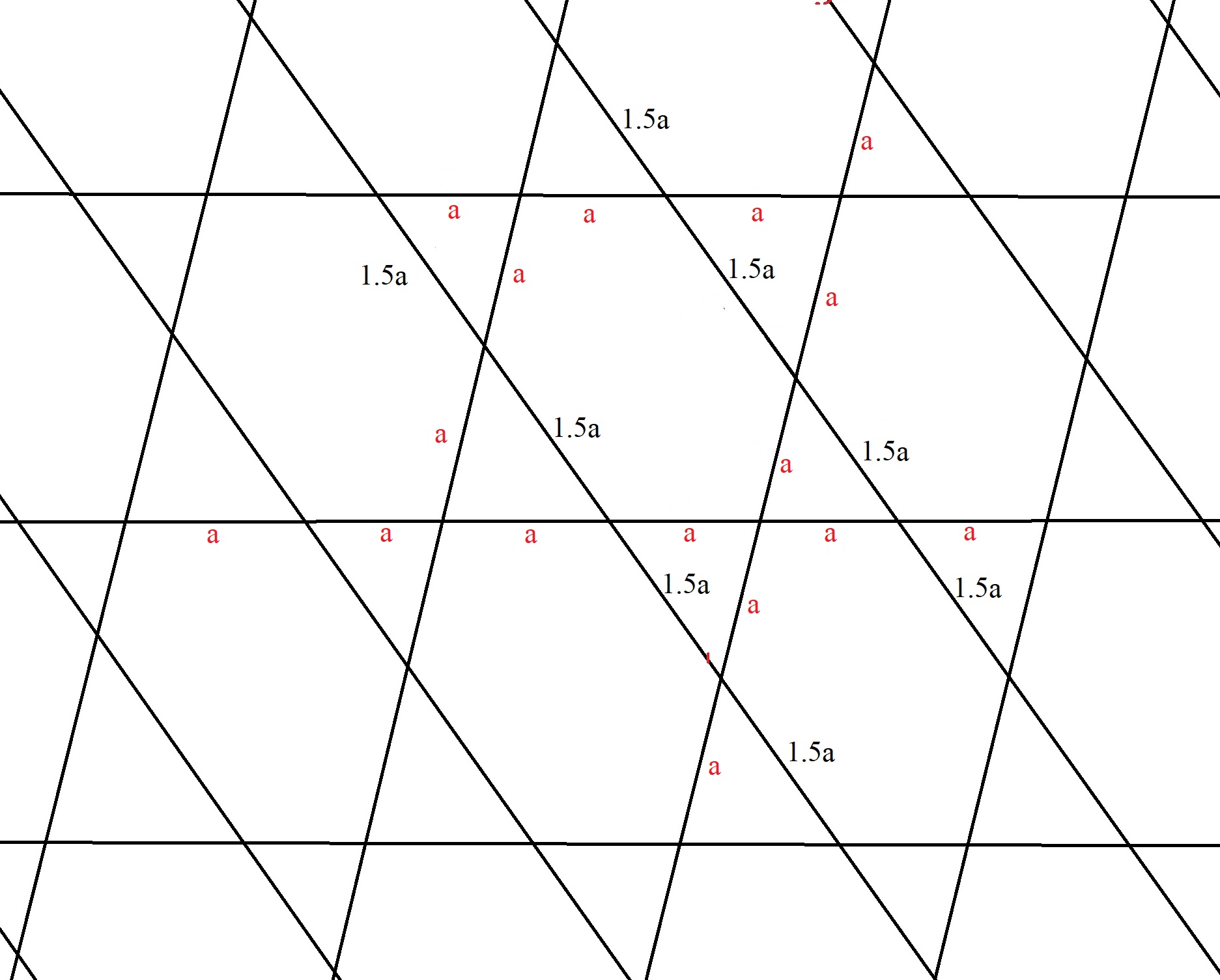Update: We can generalize the method in the original answer to make the side length a parameter:
ClearAll[angleList, anglePath, hexaGon, hexTile]
angleList[α_] := TriangleMeasurement[SSSTriangle[α, 1, 1], {"InteriorAngle", All}]
angleList[α]
{ArcCos[1 - α^2/2], ArcCos[Sqrt[α^2]/2], ArcCos[Sqrt[α^2]/2]}
anglePath[α_] := FullSimplify @ AnglePath[Prepend[{1, 0}] @
PadRight[Thread[{{1, α, 1}, angleList[α]}], 5, "Periodic"]]
hexaGon[α_] := {Black, Line[anglePath[α]], Red, PointSize @ Large, Point @ anglePath[α]}
Examples:
Row[{Graphics[hexaGon[1], ImageSize -> 1 -> 100, PlotLabel -> Style["α = 1", 16]],
Graphics[hexaGon[3/2], ImageSize -> 1 -> 100, PlotLabel -> Style["α = 3/2", 16]],
Graphics[hexaGon[5/4], ImageSize -> 1 -> 100, PlotLabel -> Style["α = 5/4", 16]],
Graphics[hexaGon[2/3], ImageSize -> 1 -> 100, PlotLabel -> Style["α = 2/3", 16]]},
Spacer[20]]

hexTile[α_, nc_, nr_, opts : OptionsPattern[]] :=
Module[{tr = Subtract @@ anglePath[α][[{1, 4}]]},
Graphics[Table[Translate[hexaGon[α],
{2 i - j First[tr], -j Last[tr]}], {i, nc}, {j, 0, nr - 1}],
opts, ImageSize -> Large]]
Examples:
hexTile[1, 7, 5]

hexTile[3/2, 7, 5]

hexTile[5/4, 7, 5]

hexTile[2/3, 7, 5]

Original answer:
angles = TriangleMeasurement[SSSTriangle[3/2, 1, 1], {"InteriorAngle", All}]
{ArcCos[-(1/8)], ArcCos[3/4], ArcCos[3/4]}
We can use angles and desired lengths (1, 3/2 and 1) with AnglePath to get the coordinates of desired hexagon primitive:
anglepath = FullSimplify @ AnglePath[Prepend[{1, 0}] @
PadRight[Thread[{{1, 3/2, 1}, angles}], 5, "Periodic"]];
hex = {Line @ anglepath, Red, PointSize @ Large, Point @ anglepath};
Graphics[hex]

We get the desired picture using translations of hex:
Graphics[Table[Translate[hex, {2 i - j/4, j 3 Sqrt[7]/4}], {i, 5}, {j, 0, 5}]]

Graphics[Table[Translate[hex, {2 i - j/4, j 3 Sqrt[7]/4}], {i, 10}, {j, 0, 4}],
ImageSize -> Large]














aare really the same length? Visually that does not look to be the case in your drawing. $\endgroup$